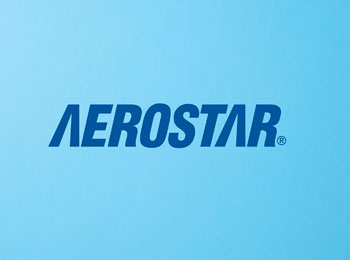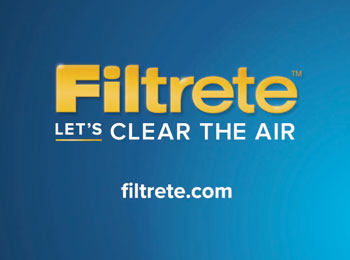Installing quality air filters is key for clean indoor air and optimal HVAC system performance. Aerostar and Filtrete are two major air filter brands that use different filtration technologies.
This detailed guide compares the pros, cons, features, differences, and costs between Aerostar and Filtrete to determine which is the better option for your home or office.
A Brief Comparison Table
| Category | Aerostar | Filtrete |
| Filtration Technology | Electrostatic | Electrostatic + Microfibers |
| MERV Efficiency Ratings | 8-13 | 12-15+ |
| Media Type | Synthetic | Proprietary Blends |
| Target Use | Residential & Commercial | Residential |
| Size Availability | Limited | Extensive |
| Average Lifespan | 1-3 months | 3-12 months |
| Pricing | $5-$20 | $10-$120 |
| Manufacturer | Aerostar | 3M |
| Locations | USA, Americas | USA |
Overview of Aerostar Air Filters

Aerostar manufactures a wide range of air filters using an electrostatic filtration technology for their residential HVAC systems and commercial buildings. Here’s an overview:
- Electrostatic Attraction – Fibers are electrostatically charged to attract and capture airborne particles.
- High Efficiency Options – MERV ratings from 8 to 13 capture fine particulates.
- Synthetic Media – Made with non-woven synthetics for durability and performance.
- Pleated Design – Increased surface area from pleating enhances filtration.
- Residential & Commercial – Products cater towards both home HVAC systems as well as large commercial buildings.
- Reasonable Pricing – Aerostar filters are affordably priced relative to other brands.
- Limited Sizes – Offered in common HVAC filter sizes but fewer options than other brands.
Overview of Filtrete Air Filters
Filtrete specializes in advanced filtration optimized for home HVAC systems:
- Electrostatic + Microfibers – Dual technology captures large and microscopic particles.
- Ultra-High Efficiency – Select filters are rated MERV 15+ and remove viruses, allergens, and smoke.
- Proprietary Media – Uses proprietary fiber blends tailored for enhanced performance.
- Pleated Design – Pleats maximize surface area for high airflow and filtration.
- Residential Focus – Designed for home heating and cooling systems with limited commercial sizes.
- Premium Pricing – Filtrete filters cost significantly more than basic options.
- Sizes for Any Home – Wide range of sizes to fit any home air system.
Also Read: Comparison Between FilterBuy And Nordic Pure Air Filters
Key Differences Between the Brands
1. Filtration Technology:
Aerostar’s pleated air filters primarily employ electrostatic attraction. This mechanism involves using static electricity to attract and capture airborne particles, which helps in reducing common allergens such as pollen, dust, and mold.
On the other hand, Filtrete adopts a more advanced approach by merging electrostatic technology with specialized microscopic fibers.
This combination not only traps but also blocks a wider range of microscopic particles from the air, providing a more comprehensive filtration process.
2. Performance Levels:

Filtrete is known for its premium range, particularly high-efficiency filters boasting MERV (Minimum Efficiency Reporting Value) ratings exceeding 13.
These are particularly effective in capturing the smallest of particles, offering superior air quality. Aerostar, while also delivering reliable performance, reaches its peak efficiency at MERV 13.
This means that while they are effective, Aerostar might not be as efficient in extreme conditions as some of Filtrete’s premium models.
3. Media:
The media or the material used in the filter plays a vital role in determining its efficiency. Aerostar uses standard synthetic materials, which are effective for general-purpose filtration needs.
Conversely, Filtrete goes the extra mile by engineering their proprietary fiber blends, resulting in a more optimized and targeted filtration process suitable for specific environments.
4. Target Use:
While both brands cater to residential settings, Aerostar has expanded its reach to serve commercial sites as well, making it versatile in its applications.
Filtrete, keeping its focus narrow, primarily targets residential settings, ensuring a specialized product range tailored for home environments.
5. Availability:
When it comes to size versatility, Filtrete offers a broader spectrum. Their extensive size offerings mean homeowners are more likely to find a size that precisely fits their systems. In contrast, Aerostar provides fewer size options, which might limit the choices for some consumers.
6. Price:
Cost is a deciding factor for many buyers. In this arena, Filtrete’s filters come with a heftier price tag, reflecting their advanced technology and proprietary materials. Aerostar, providing effective filtration without the bells and whistles, offers a more budget-friendly alternative, making it an attractive option for those seeking value for money.
7. Lifespan:
Durability and maintenance frequency are crucial considerations for users. Filtrete’s high-end filters, designed with advanced materials and technology, can efficiently operate up to 12 months before necessitating a replacement.
Aerostar’s filters, being more affordable, have a shorter lifespan, usually between 1-3 months, implying a more frequent change is required to maintain optimal air quality.
Watch this review video:
Pros and Cons of Aerostar Filters
Some potential upsides and downsides of choosing Aerostar filters:
Pros
- Inexpensive filters improve quality over bare minimum options
- Electrostatic technology still captures many airborne particles
- Suitable for residential HVAC systems and commercial buildings
- Offer high MERV ratings up to 13 for decent efficiency
- Durable construction for a 1-3 month lifespan
Cons
- Limited size availability lacking for some HVAC systems
- Filtration performance not as advanced as newer technologies
- Short 1-3 month lifespan requires very frequent changes
- Cheaper models may reduce system airflow
- Not optimized for superior home air purification
Pros and Cons of Filtrete Filters
Some key advantages and potential drawbacks of using Filtrete air filters:
Pros
- Extremely high filtration efficiency ratings up to MERV 15
- Advanced dual-technology captures the full spectrum of particles
- Highest-end filters filter out viruses, smoke, allergens, and more
- Last up to 12 months for fewer filter changes
- Significantly improve indoor residential air quality
Cons
- Premium filters are far more expensive upfront
- Advanced models can restrict HVAC system airflow
- Most models only accommodated standard home sizes
- Highest efficiency requires proper sizing and HVAC setup
- Not cost-effective for commercial buildings
Cost Comparison of Aerostar Vs. Filtrete
On average, Filtrete filters are around 2-3 times more expensive than comparable Aerostar models:
| Filter Type | Aerostar Price | Filtrete Price |
| Basic Pleated | $5-$10 | $10-$20 |
| Mid-Grade Pleated | $10-$15 | $25-$40 |
| High-Efficiency Pleated | $15-$20 | $40-$80 |
| Maximum Efficiency Pleated | N/A | $80-$120 |
However, Filtrete filters maintain performance up to a year before needing replacement whereas cheaper Aerostar filters require replacement quarterly. This narrows the cost difference over time.
Overall Winner: Filtrete or Aerostar?
For pure air filtration at the lowest price point, Aerostar filters are the winner. But Filtrete air filters edge out Aerostar in terms of cutting-edge filtration performance, particularly their highest efficiency models above MERV 13.
Filtrete’s advanced media, pleating, and electrostatic microfibers significantly outperform Aerostar’s more conventional electrostatic filters when it comes to particle capture, airflow resistance, lifespan, and protecting indoor residential air quality against fine particulates.
For commercial buildings not requiring specialized performance, Aerostar’s affordability makes sense. But in residential settings, investing in premium Filtrete filters delivers superior air purification with less hassle from fewer filter changes.
Also Read: Differences Between Molekule And Mila Air Purifiers.
Frequently Asked Questions (FAQs)
Aerostar is a reputable mid-range air filter brand. Their electrostatic pleated filters offer decent performance for the price point. However, they do not match premium brands like Filtrete in terms of specialized media, high-efficiency ratings, and cutting-edge capture technology.
For optimal performance, Filtrete’s highest-end MERV 15+ filters designed to last 12 months should be replaced yearly. Mid-range Filtrete filters will need replacement every 6-9 months. Lower-end Filtrete filters and any visibly dirty filters should be swapped every 3 months.
Aerostar air filters are manufactured in Jonesboro, Arkansas at their main production facility. They have distributors throughout the Americas who sell and ship out their filter products domestically and internationally.
Filtrete’s highest efficiency filters maintain filtration performance for 12 months. Their mid-tier filters last around 6-9 months typically before requiring a change. Entry-level Filtrete filters are only effective for about 3 months like most conventional HVAC air filters.
Also Read: Comparison Between FilterBuy And Fitrete Air Filters
Key Takeaways
When choosing between Aerostar and Filtrete, consider your filtration needs, efficiency goals, HVAC system setup, and budget. For cost-sensitive residential or commercial use, Aerostar offers a decent filter solution.
But for the cleanest home air, Filtrete’s advanced high-efficiency filters deliver superior air purification that can justify the steeper price point.
